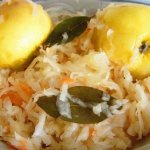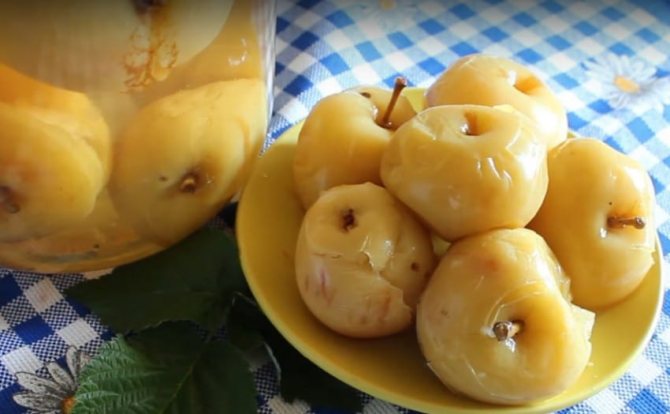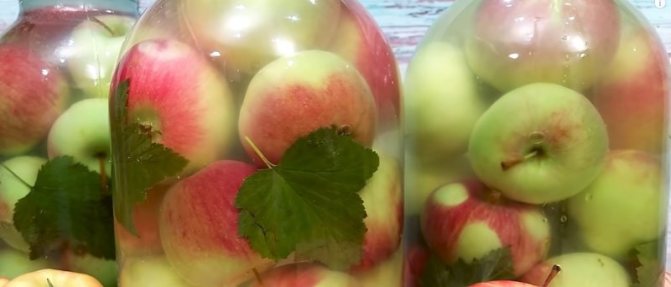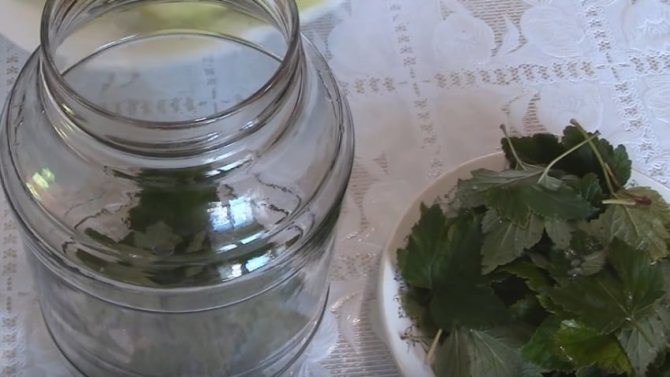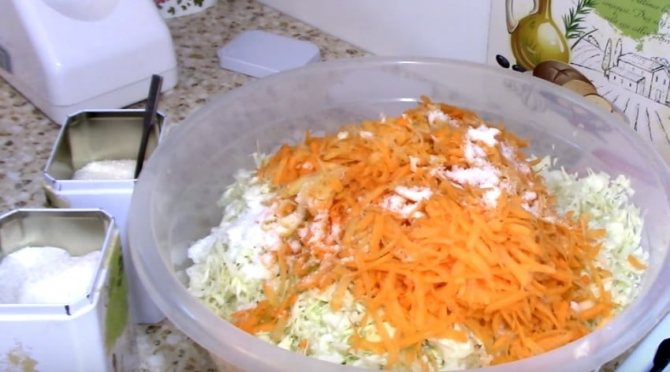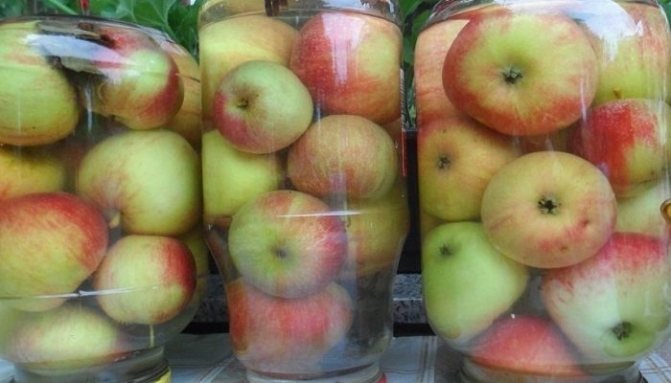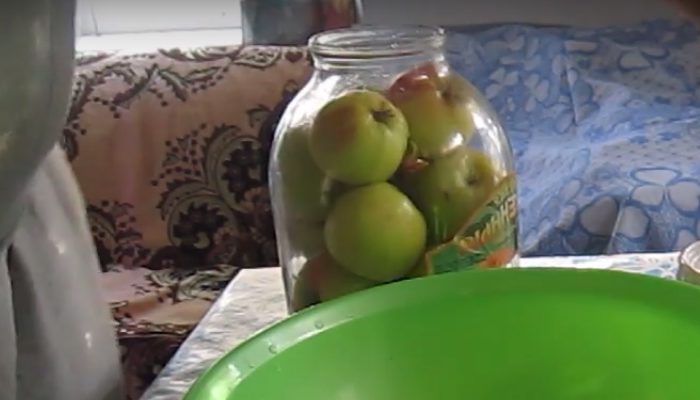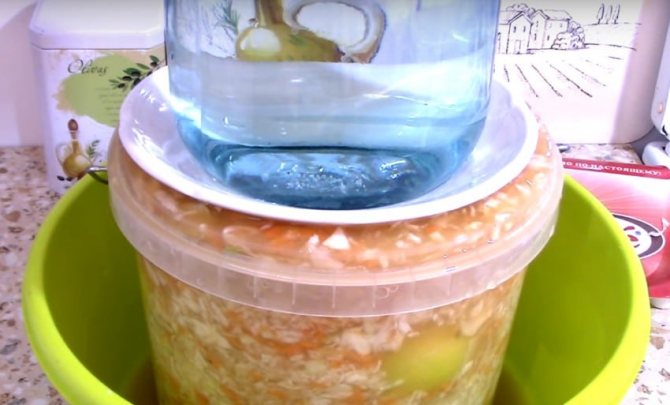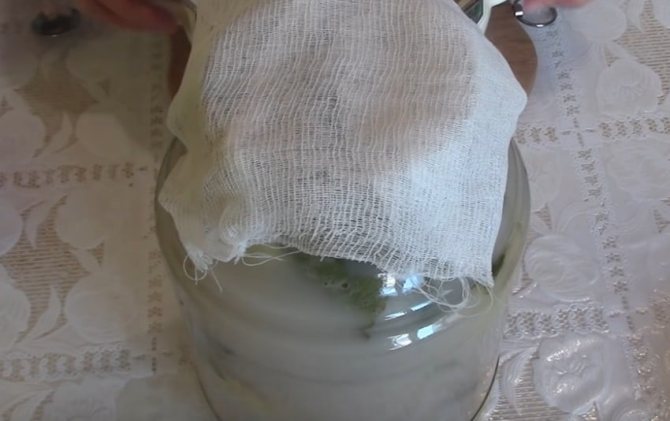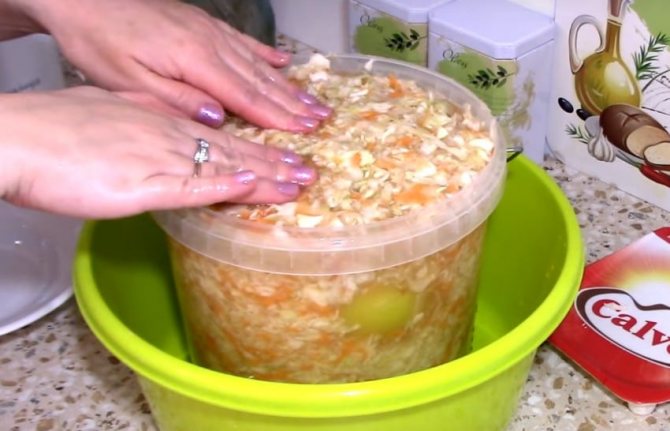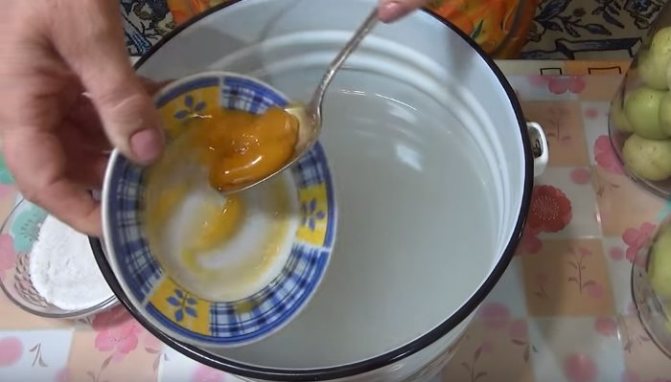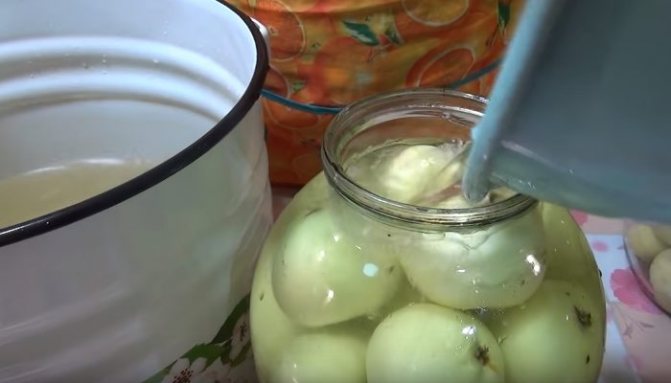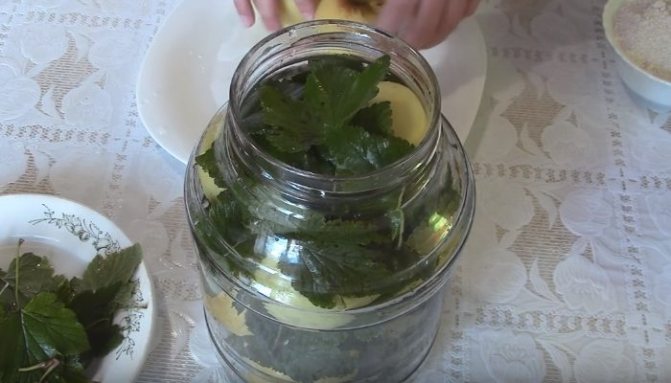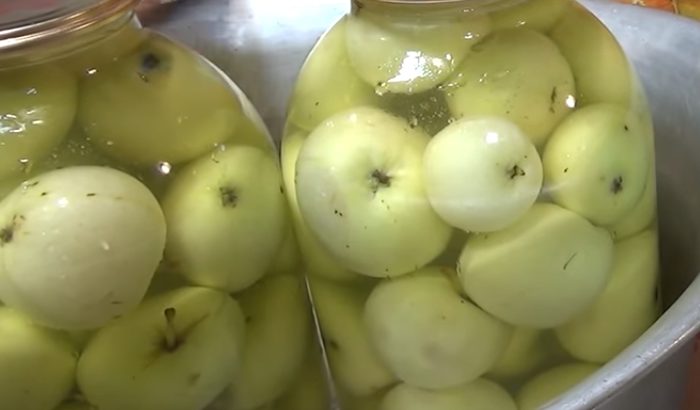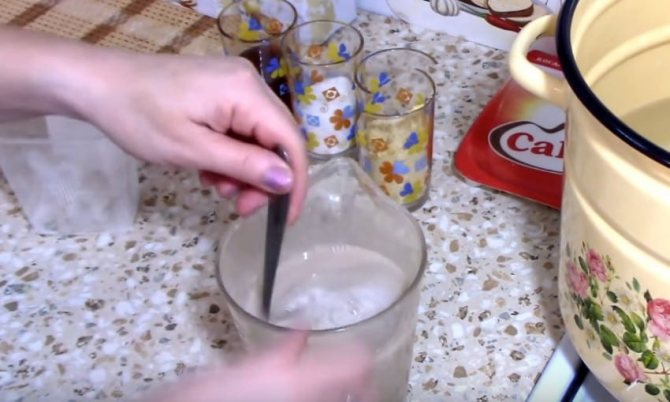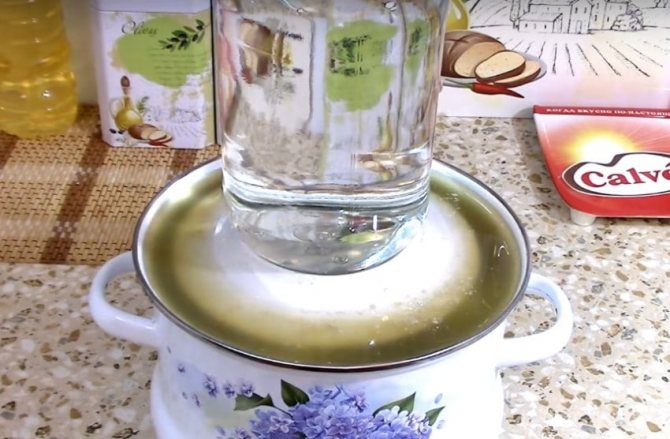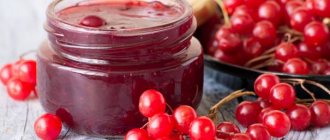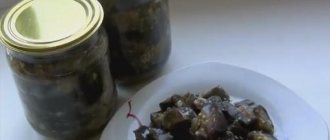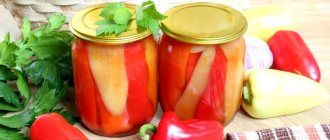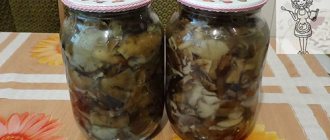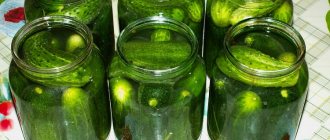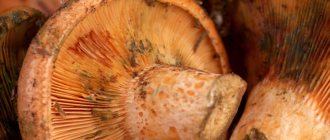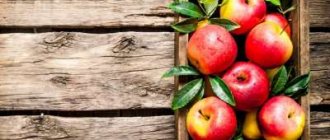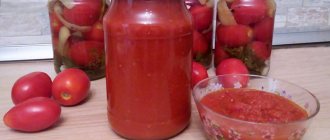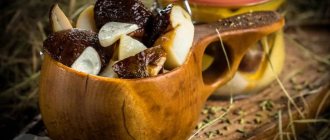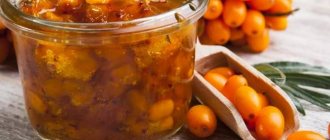Soaking apples is a simple, but very reliable, old way of harvesting apples for the winter. For a long time, late varieties of apples were soaked in large oak barrels along with pure rye straw, with malt or with rye flour with the addition of currant leaves, cabbage and cherries, and then enjoyed the juicy, sour-spicy apple taste until next summer. Nowadays, apples are most often soaked not in barrels, but in buckets or in deep enameled pots. We bring to your attention five recipes for peeing apples in buckets to choose from.
Pickled apples with cabbage and carrots in a bucket for the winter
Cooking time is 1.5 hours.
Servings - 10 liters.
To prepare not only a tasty snack, but also a vitamin reserve for the winter for the whole family, ferment apples in a bucket along with white cabbage and carrots - over time, an increased amount of vitamin C is formed in this preparation, which, as you know, is an excellent protective agent against any colds and flu and also perfectly boosts the immune system. The recipe is for 10 liters of the finished product.
Ingredients
Servings: - + 10
- How much apple will fit in a 10 liter bucket
- White cabbage 4 kg
- Carrots 1 kg
- Salt 5 tablespoons without a slide
- Granulated sugar 4 tablespoons without a slide
Steps
1 hour. 30 min Print
- Apples should be soaked in this way in a clean enamel bucket or in a large saucepan. Any utensils for fermentation should be washed with soda, and then rinsed with boiling water. Grate the peeled carrots on a coarse grater.
- Apples need to be washed and only medium-sized, undamaged fruits should be selected for pickling.
- Chop the cabbage using a special machine or chop it very finely with a knife, and then mix with salt, sugar and add the carrots. Grind the vegetables with a pusher or with your hands until they begin to let out the juice, which is necessary for fermentation.
- Put apples and cabbage in a clean container very tightly, filling all the gaps between apples with cabbage. The last layer should be cabbage with carrots. When you put everything in a bucket, pour the salting on top with cooled boiled water if the vegetable juice is not enough.
- Cover the salting with a clean plate, and put a jar of water on it as a load. Over time, a lot of brine will appear in the bucket, it may start to flow out, so immediately place the bucket with apples and cabbage in a container. Next, the bucket should stand in the kitchen, where the fermentation process will take place at room temperature in 5-7 days. During this time, the characteristic smell of sauerkraut should appear. The bucket can be taken out into the cold when active fermentation is over.
Bon Appetit!
Advice: a bucket of apples and cabbage can be taken out into the cold even after 3-4 days if it was in a very warm room, otherwise the cabbage will become too sour. In a cold room, cover the bucket with a lid, and sprinkle the cabbage with salt on top under the lid so that mold does not form. Apples and cabbage can be eaten no earlier than after 4 weeks.
Pickled apples with honey in a bucket
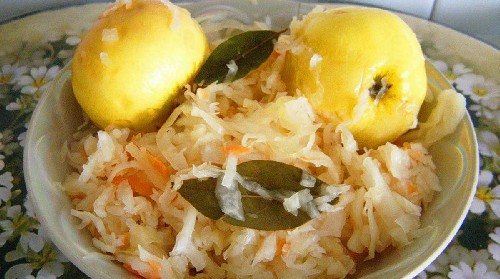
To get not sour, but sweet apples by the method of soaking, for this they need to be soaked together with honey. Neither adults nor children will refuse such an unusual fruit delicacy!
Ingredients:
- Apples - for 1 bucket.
- Natural honey - 0.5 l.
- Coarse salt - 3 tablespoons without a slide.
- Water - 6 liters.
Cooking process:
- Put washed and dried apples (preferably late varieties) in a well-washed enamel bucket; apples should not lie too tightly, otherwise they will crush and crush each other.
- Boil the water and cool until warm, and then add salt and honey to it, stir well. Remember that honey loses its healing properties when heated to 50 degrees, so the water should not be hot.
- When the filling has cooled, add it to the apples. Keep in mind that all apples must be completely immersed in the filling, so you need to make oppression on top: put a plate of large diameter, and put a jar of water on it.
- The apples should ferment in the pot for at least 5-7 days at room temperature, and then take the bucket of soaked apples to a cold place (on the balcony, in the pantry, in the cellar) and cover with a lid.
Bon Appetit!
Advice: To prevent apples from spoiling, from time to time add boiled cold water with honey and salt to the bucket, because apples actively absorb liquid when they begin to ferment. Apples must be kept completely submerged in the pot or they will spoil quickly.
What apples to choose


For peeing, it is better to choose apples of late and winter varieties. The best varieties are considered:
- Antonovka,
- Borovinka,
- Slav,
- Pepin Saffron.
The fruits should be ripe, firm, free from damage and rotten areas.
But it's not worth wetting freshly picked apples - they should mature for at least a couple of weeks.
During this time, initially unnoticed damages on the fruits may appear, such apples are rejected. Otherwise, one damaged apple can ruin the entire harvest. Sweet apples are better for peeing because they keep much better than sour ones.
Fruit size is also very important. Large apples take longer to soak in brine, so the fermentation process is delayed. In addition, it is very difficult to push them through a narrow neck (if the workpiece is in cans). The ideal option is medium-sized fruits.
Pickled apples in a bucket at home - the classic way
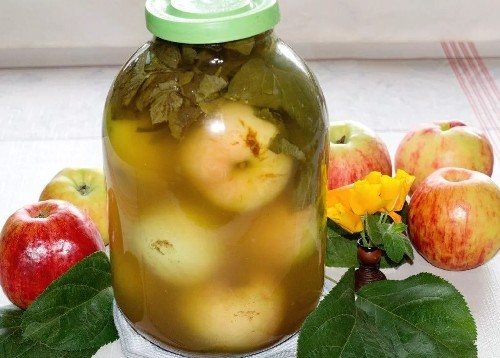

We suggest you try the most common folk way of soaking apples with sugar, salt and fragrant leaves of raspberries, mint and cherries. As a result, you will have aromatic apples - feel free to serve them on any table as an excellent fruit dessert!
Ingredients:
- Apples - for 1 bucket.
- Cherry, raspberry, mint leaves - as needed.
- Coarse salt - 3 tablespoons without a slide.
- Granulated sugar - 0.4 kg.
- Water - 6 liters.
Cooking process:
- At the bottom of a well-washed enamel bucket or large saucepan, fold the cherry, raspberry and mint leaves, which must be thoroughly washed under running water and rinsed with boiling water in advance.
- Next, lay apples to the middle of the bucket, and then a layer of leaves.
- Put the apples on top of the leaves again, this time to the very top of the bucket, and then cover the apples with the leaves.
- Boil 6 liters of water, dissolve salt, sugar in it and cool the water.
- Pour apples with cold pouring, cover with a plate and place oppression on it from a can of water or a heavy, clean stone.
- The apples should ferment in the pot for at least a week at room temperature. Top up the bucket with water, salt and sugar as needed, as the apples will actively absorb the filling - it is very important to ensure that all the apples are immersed in the filling, otherwise they will spoil.
- Then, after 5-7 days, take out the bucket of soaked apples to a cold place (cellar, balcony, pantry) and store it under a lid. The apples will be ready in 1-1.5 months.
Bon Appetit!
Advice: medium-sized apples of such varieties as Antonovka, pepin or anise are best suited for soaking. After the apples are removed from the tree, they need to be kept indoors for 3-4 weeks for them to fully ripen and become more aromatic.In order for apples to be well stored in finished form, select for urination only fully ripe, juicy fruits without wormholes or other damage.
How to prepare apples for peeing
The process of soaking apples and other fruits or berries is to convert the fructose from them into lactic acid and alcohol. This transformation is catalyzed by yeast and lactic acid bacteria. At the exit, the same sour-sweet "soaked" taste is obtained. Not all apples are suitable for cooking. They must meet the following criteria:
- medium uniform size;
- hardness and density;
- sour taste;
- plucked from a tree, and not fallen to the ground;
- without red blush (for summer varieties).
Advice. You can not wet recently picked apples - let them lie down. Thus, the starch in their composition will turn into sugar.
Pickled apples in a bucket at home with rye straw
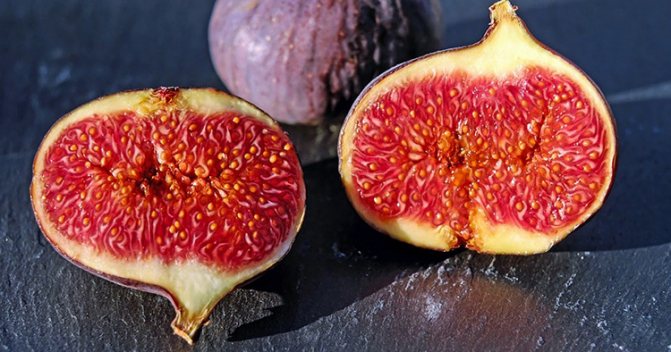

Steamed rye straw has long been used to soak apples, it helped the brine to ferment faster and saturate them with its unique herbal aroma, resulting in excellent sweet and sour soaked apples that were excellently stored in brine for many months.
Ingredients:
- Apples - for 1 bucket.
- Rye straw - as needed.
- Mustard powder - 1 tablespoon without a slide.
- Coarse salt - 150 gr.
- Granulated sugar - 0.4 kg.
- Water - 6 liters.
Cooking process:
- Steam clean, dry straw with boiling water for 30 minutes so that it becomes soft, make sure that the straw is completely immersed in boiling water.
- On the bottom of a well-washed enamel bucket or large saucepan, fold the steamed straw into a not too thin layer, and on top of it lay a layer of apples up to the middle of the bucket.
- This is followed by a layer of steamed straw, and then - again apples to the top of the bucket.
- Put a layer of straw on top of the apples, it should cover all the apples well.
- Add salt, mustard powder and sugar to warm boiled water, then let the brine cool. Pour apples with cold brine.
- Cover the bucket with apples with a plate and place the oppression from a can of water on it (you can also use a clean, heavy stone).
- The apples should ferment in the pot for 5-7 days at room temperature. The bucket should be in a dark place. Top up the bucket with water, salt and sugar as needed, as the apples will actively absorb the filling.
- Then take out the bucket of soaked apples to a cold place (balcony, pantry, cellar) and store it under a lid. The apples will be ready in 1-1.5 months.
Bon Appetit!
Pickled apples in a bucket with rye flour and herbs


At home, it is not difficult to cook apples soaked in brine with rye flour with the addition of any spicy herbs, for example, with mint, with currant and cherry leaves, with rosemary and oregano. It will turn out tasty and aromatic - it is checked!
Ingredients:
- Apples - for 1 bucket.
- Any herbs and leaves as needed.
- Rye flour - 1 glass.
- Coarse salt - 150 gr.
- Granulated sugar - 1-2 tbsp.
- Water - 6 liters.
Cooking process:
- At the bottom of a well-washed enamel bucket or large saucepan, place clean, scalded currant leaves, cherries, and any herbs of your choice, such as oregano, mint, lemon balm and rosemary.
- Next, place clean apples (medium-sized late-ripening varieties) to the middle of the bucket.
- This is followed by a layer of leaves and herbs, and then - again apples to the top of the bucket.
- On top of the apples again lay a layer of herbs and leaves of currants and cherries, they should completely cover all the apples.
- Add salt, sugar and flour to warm boiled water, stir and let the brine cool. Pour apples to the very top with cold brine.
- Cover the bucket with apples with a plate and put oppression on it from a can of water or a stone.
- Apples should wander in the pot for at least a week at room temperature, but it is better to stand the bucket in a dark place. Add water with salt, flour and sugar to the bucket as needed, as the apples will actively absorb the filling in the first stages of fermentation.
- After 7 days, take the bucket of soaked apples out to a cold place (balcony, pantry, or cellar) and store them under a lid. The apples will be ready in 1-1.5 months.
Preparation of containers and raw materials
Late autumn or winter varieties of apples are suitable for urinating, preferably sour, with dense pulp. Antonovka, Pepin, Anis are ideal. You can use early varieties - White filling or Papirovka, but the blanks will not be stored until the new harvest. This is already a dish for fanatical lovers of soaked apples or those who urgently need to restore the intestinal microflora without the use of drugs.
Fruits are picked directly from the tree, laid out in boxes for 2-3 weeks for ripening. Then they are sorted out, discarding the spoiled or sick. Fruits should be medium in size:
- large ones cook unevenly and slowly;
- small ones peroxide too quickly.
Before you cook pickled apples at home, you need to select and process the container:
- Beech, linden or oak barrels are suitable for residents of private houses if they have enough space to store large containers. First, the wooden container must be soaked in cold water until the leak stops, then pour boiling water with caustic (20-25 g per bucket) or soda ash (50-60 g) soda for 20 minutes. After that, the barrel is washed with a hose, and immediately before laying the fruit, it is scalded.
- Enameled containers made of food grade stainless steel or large-capacity glass containers are washed with soda, then rinsed thoroughly. Before laying the fruit, it is scalded with boiling water.
- Glass cylinders with a volume of 3-5 liters are easiest to thoroughly wash and sterilize immediately before wetting the apples. This is the most unfortunate option, but for a small city apartment, perhaps the only one.
Pickled apples in a bucket with cabbage
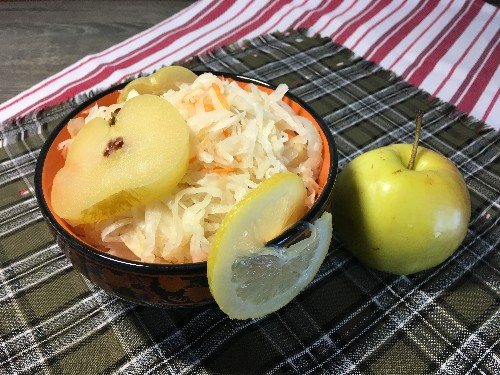

Apples prepared according to this recipe are not considered as a dessert, but as an excellent appetizer for alcoholic beverages.
Ingredients:
- Apples - 5 kg.
- White cabbage - 5 kg.
- Fresh carrots - 4 pcs.
- Sugar - 5 tablespoons
- Salt - 6 tablespoons
Cooking process:
- Grind cabbage and carrots using a coarse grater.
- Wash the apples thoroughly, re-sort the fruits, choosing the most juicy and dense ones.
- Put some of the cabbage at the bottom of the bucket, and put the apples on top. Alternate similar layers until the ingredients are completely finished.
- Bring water to a boil in a separate saucepan. Pour salt and sugar into it.
- Pour apples with cabbage filling. Cover with a lid, put oppression on top so that the fruits do not float.
- After 2-3 days, remove to a cool place.
You can taste the product in a month.
How to soak Antonovka?
Antonovka is a variety of apples perfect for soaking. During canning, the fruits acquire an unusual taste and aroma. A simple recipe for soaked Antonovka apples for the winter will diversify the meager winter menu.
Products:
- mint leaves - 15 g;
- currant - 20 g;
- cherry leaves - 20 g;
- apples - 5 kg;
- filtered water - 9.5 liters;
- natural honey - 380 g;
- table salt - 170 g;
- rye flour - 120 g.
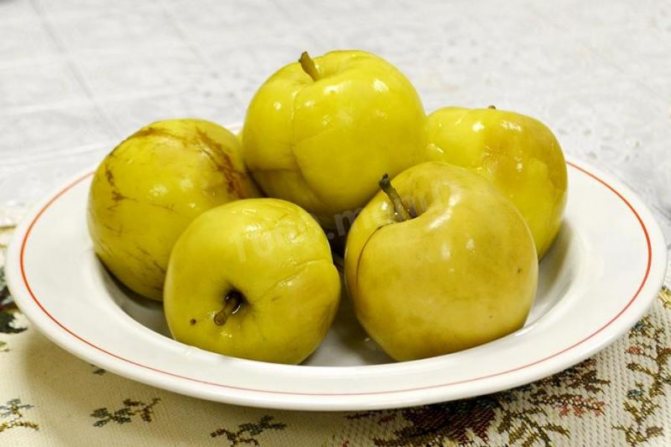

Antonovka
Rinse a large saucepan thoroughly, rinse with boiling water. Put clean leaves on the bottom. Rinse the apples, remove the twigs and leaves. Put the fruits in a container alternately with aromatic herbs.
Pour warm, boiled liquid into a saucepan, add beekeeping product, table salt and flour. Stir thoroughly until completely dissolved.
Fill the container with brine, put a press on top. Remove to a warm place for 45 days, and then take out into the cold.
Pickled apples with lingonberries
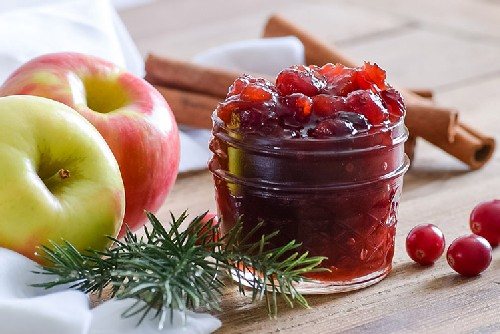

Ingredients:
- Apples - 10 kg.
- Lingonberry - 250 gr.
- Sugar - 200 gr.
- Salt - 50 gr.
- Rye flour - 100 gr.
- Blackcurrant and cherry leaves - 10 pcs.
- Boiled water - 5 liters.
Cooking process:
- Boil the required amount of water, add salt and sugar. add rye flour and mix thoroughly. Wait for complete cooling.
- Place part of the fruit leaves at the bottom of the bucket. Arrange the apples in layers, sprinkling with lingonberries.
- Pour the resulting dish ready. With brine cooled to room temperature.
- Lay the rest of the fruit leaves on top and set the oppression.
Apples soaked with cranberries should be kept in a cool place for the entire cooking period. The maximum temperature is 15 degrees. The dish can be tasted after 3-4 weeks.
The easiest way to make soaked apples
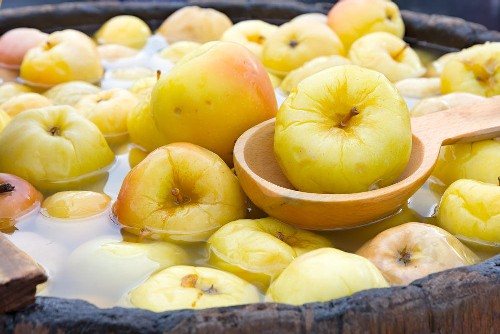

This option for cooking pickled apples can be called a classic. There are no extraneous ingredients in the composition, and the fruits themselves are incredibly juicy and appetizing. The cooking process does not require special knowledge and skills, it is very simple.
Ingredients:
- Apples - 1 bucket.
- Sugar - 500 gr.
- Salt - 5 tablespoons
- White cabbage leaves.
Cooking process:
- Crumpled and rotten fruits should be removed because they can affect the cooking process. Rinse whole and firm apples under running water and dry with a towel. If time permits, you can wait until they dry naturally.
- At the bottom of the bucket, spread cabbage leaves so that they cover the entire bottom.
- Cooked fruits are spread over the cabbage and re-foliated.
- Start preparing the marinade. For this, sugar and salt are dissolved in water. The resulting liquid must be cooled to 38 degrees, and then pour apples into it.
- Cabbage leaves are also laid out in the last layer.
- To make the apples cook faster, oppression is placed on top.
Bon Appetit!

